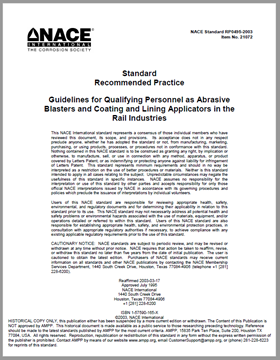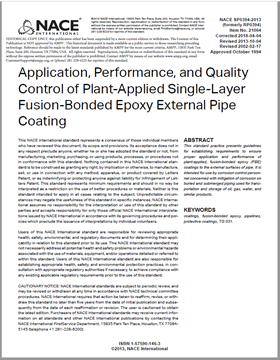Procedure for the evaluation of fiber-reinforced plastic (FRP) pipe and tubulars for use in oilfield service. FRP pipe systems include the pipe or tube body, connections, fittings, and adhesive and elastomeric seals. Historical Document 1998
Product Number:
21233-HD1998
ISBN:
1-57590-061-0
Author:
NACE International
Publication Date:
1998
$179.00
$179.00
$179.00
This standard test method was prepared by NACE International Task Group T-1G-24 to serve as a guide in the process of evaluating fiber-reinforced plastic (FRP) pipe and tubulars for use in oilfield applications. This standard provides a means to evaluate the relative resistance of most FRP tubular products to specific oilfield environments by comparison of apparent tensile strength before and after exposure. This standard may be used by polymer manufacturers, processors, equipment manufacturers, operating companies, or others who desire to compare the resistance of various FRP tubular products to specific oilfield environments. The test methodologies for the determination of apparent tensile strength are similar to those given in ASTM D 2290. 1 If specified test conditions and procedures are followed, data from separate laboratories that use this test method may be compared. The task group knows of no technical organization that has issued a comparable standard test method for materials in oilfield applications.
T-1G-24 on FRP Pipe and Tubulars in Oilfield Service is a component of Unit Committee T-1G on Protective Coatings, Elastomers, and Other Nonmetallic Materials for Oilfield Use. This standard is issued under the auspices of Group Committee T-1 on Corrosion Control in Petroleum Production. NACE International technical committees are composed of industry representatives including consumers, producers, and interested individuals.
This standard presents a procedure for the evaluation of fiber-reinforced plastic (FRP) pipe and tubulars for use in oilfield service. FRP pipe systems include the pipe or tube body, connections, fittings, and adhesive and elastomeric seals. This standard is intended only to evaluate the pipe or tube body; other components of FRP systems are outside the scope of this standard. This standard includes procedures for exposing the FRP pipe or tube to simulated oilfield environments and the determination of the comparative apparent tensile strength. Pipes or tubes of different wall thickness may respond differently due to differences in the concentration gradients established through-wall produced by permeation of corrosive or reactive species in the environment. The purpose of this standard is to allow for the comparison of test data among test laboratories and provide a recognized test method to evaluate the compatibility of FRP pipe and tubulars for various oilfield applications.
Historical Document 1998




